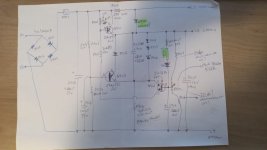VERAULT
Veteran Member
You can replace these glass passivated diodes with the 4A rated BY448. If you strike one with particularly thick lead wires, use a BY228 that has a 5A rating. Both of these are over 1600V piv rated and have fast switching times, they are probably far superior to the diode that was in there in the first place and they are easy to get.
Thanks Hugo, I will make an order for a set of both when I get home.

